[ Editor’s Note: This is an update of a previous article that cited information incorrectly reported by the Courier-Journal. We gathered this new information ourselves directly from the neighborhood and developers, so hopefully this should clear up the lingering mis-information out there. ]
An entire 4.5 acre block is slated for redevelopment on the southern edge of Old Louisville adjacent to the University of Louisville. Investment Property Advisors of Valparaiso, Indiana has put together a mixed-use proposal including retail space, a mix of market rate apartments and student housing, a landscaped interior courtyard, and underground parking in an attempt to create a vibrant University Center catering to students and the community at large.
The target block is bounded by Cardinal Boulevard and Bloom Street between Third & Fourth Streets. Two historic brick houses and an apartment building on the site’s northeast corner will remain and be incorporated into the project. The Masterson’s dining room and catering service, dating to the 1950s as a diner, will be demolished under the proposal.
An original plan presented to the Old Louisville neighborhood last year called for 300 housing units with 700 beds, 50,000 square feet of commercial space, and 350 to 400 parking spaces on site, mostly underground. One of the historic buildings on site would have been demolished for surface level parking and buildings on the preliminary plan would have ranged from four to seven stories. Working with the neighborhood, the developers slightly reduced the scale of the project to around 250 units with 600 beds, limited commercial space to 28,000 square feet, and cut parking down to less than 150 spaces. Perimeter building heights were held at four stories with one five story structure in the middle of the block. The project components are still being determined and are subject to change before a final plan is announced, but the developers believe a vibrant mixed-use project is the right fit for the area so close to the University.
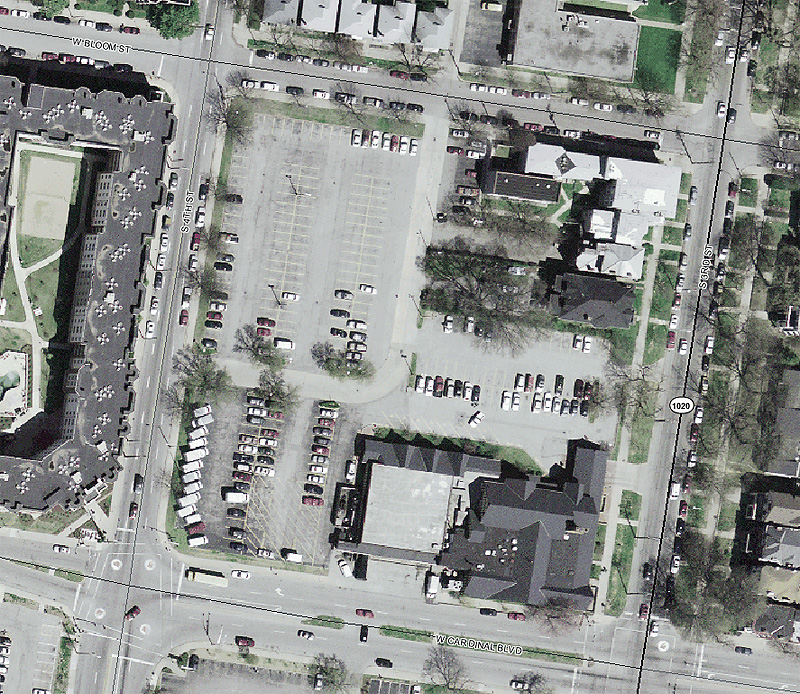
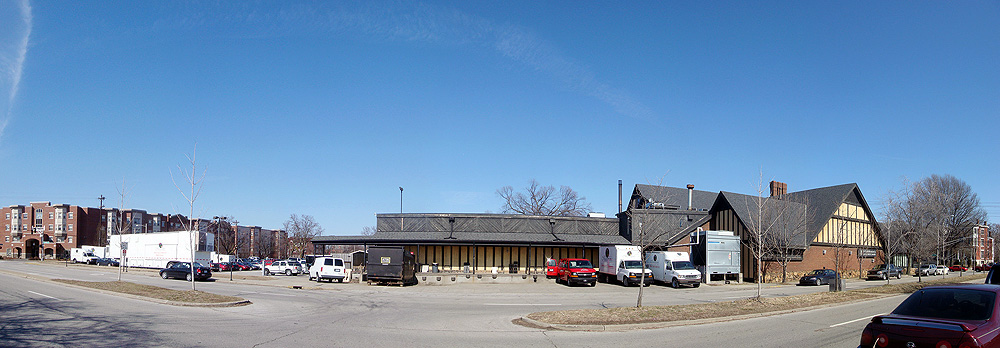
After a meeting with Old Louisville last year, the developers reworked their plan to address neighborhood concerns about size and integration into the neighborhood. As we mentioned earlier, individual components were scaled back (700 to 600 beds, 50,000 to 28,000 square feet of commercial space). Higher quality streetscape materials were also incorporated into the project including a brick alley and traditional paving materials on sidewalks. All three historic structures were also saved in the new proposal and will be used for multi-family housing and “clubhouse” amenities with a pool. The neighborhood was happy with the changes made to the proposal, but concerns about parking and traffic remained.
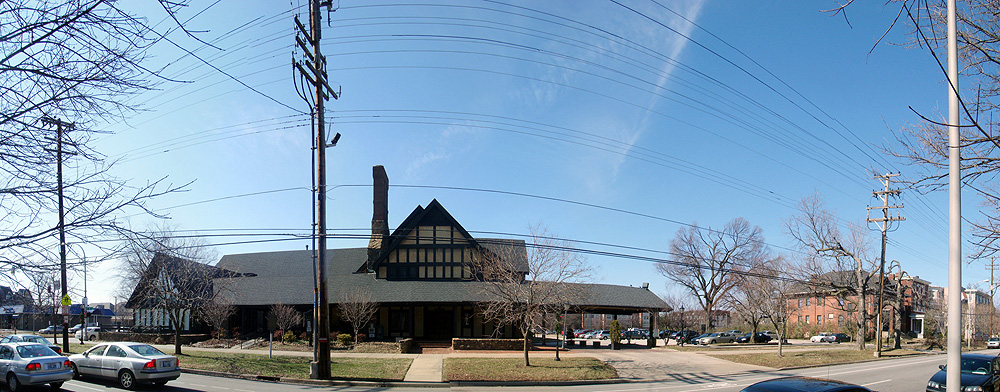

Traffic and parking have long been a divisive point in the area surrounding U of L. Neighborhood leader Herb Fink and Councilman Unseld had at one point several years ago attempted to broker a parking garage deal between JCPS and U of L that would have placed a garage on the corner of Second Street and Cardinal Boulevard on Manual High School property. The plan faded with no financing available.
Some neighbors were concerned about retail competing with the traditional Old Louisville commercial center at Fourth and Oak Streets. We feel the areas are distinct enough and separate enough at a distance of about a mile that additional retail will only help the entire Old Louisville area. Oak Street has a good stock of historic storefronts, but high-quality new construction commercial space will draw tenants that wouldn’t normally choose to locate in a historic structure. With more business located in or near Old Louisville, all areas stand to gain, especially a compact and walkable district like Oak Street.
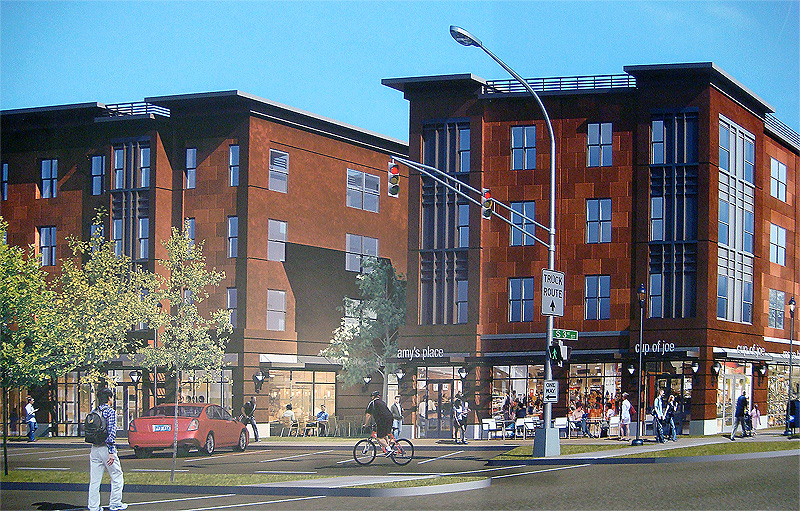
As you can see from the project renderings (still just a proposal of what might actually end up getting built), the Masterson’s block will be fundamentally changed from the predominantly surface level parking space that exists today. It appears as though the buildings are clad predominantly in brick and some sort of infill panel with metal accents. Roof terraces have been incorporated into the project and several interior courtyards are part of the plan. One linear plaza and lawn stretching north from Cardinal Boulevard into the middle of the block looks like it has potential to create an interesting urban space.
The mixed-use project has been designed by local architects and planners Sabak, Wilson, and Lingo. The firm has considerable experience planning high-quality mixed-use and new urban neighborhoods. They have worked on both the Park DuValle new urban neighborhood and Norton Commons in eastern Jefferson County. We’re pleased that this project has incorporated many important urban qualities such as a nearly continuous urban edge around the block and an emphasis on streetscape design.
Zoning still remains the dominant concern for the project. The Old Louisville Neighborhood Plan calls for three classifications of development scale: Neighborhood General (such as the bulk of Old Louisville consisting of one and two-family dwellings), Commercial Center (a dense mixed-use area centered at Fourth & Oak), and Transition Zone (a dense area bridging between the neighborhood and commercial center). The block is currently classified under Neighborhood General and would require changes to the Traditional Neighborhood Zoning District (TNZD) which presents difficult legal problems. The project won’t be able to advance until these issues are addressed.
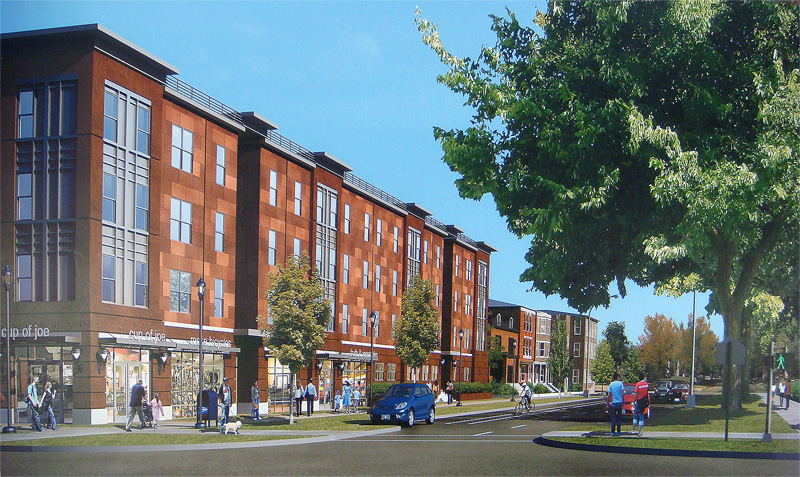
You can see below on the proposal site plans that the buildings facing the neighborhood are set back from the street to align with the urban edge of surrounding houses while the commercial areas mainly fronting Cardinal Boulevard provide widened sidewalks. The diagonal parking shown in the plans was only a study and has been eliminated; parallel parking as it appears today will be maintained. Below, you can also get an idea about how underground parking works on the site. Parking issues still must be worked out, but we believe there is room for negotiation between the neighborhood and developers on how to proceed and meetings between the groups are scheduled for the future. This could also be an opportune time to revive the idea of a parking garage (with retail along the sidewalk, of course) at Second and Cardinal.
When we originally read in the C-J that the project had been cut from 700 beds to 150 beds among other things, it was devastating news, and luckily false. The project still has an appropriate density to create a vibrant University Center stretching south along Third Street while not overwhelming Old Louisville. The developers hope to have the project under construction by late summer, but several hurdles still exist including resolving neighborhood parking concerns, finalizing a design, and assuring proper zoning. Investment Property Advisors feel they have found an ideal opportunity for neighborhood improvement and we believe this project will do wonders to change the perception of the area adjacent to the University as one of driving and parking lots to walking and shops.
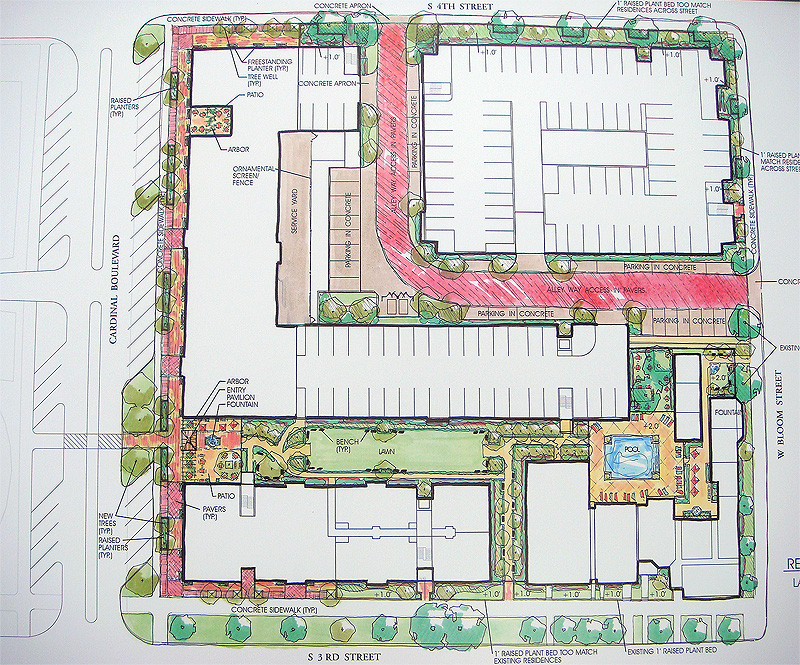
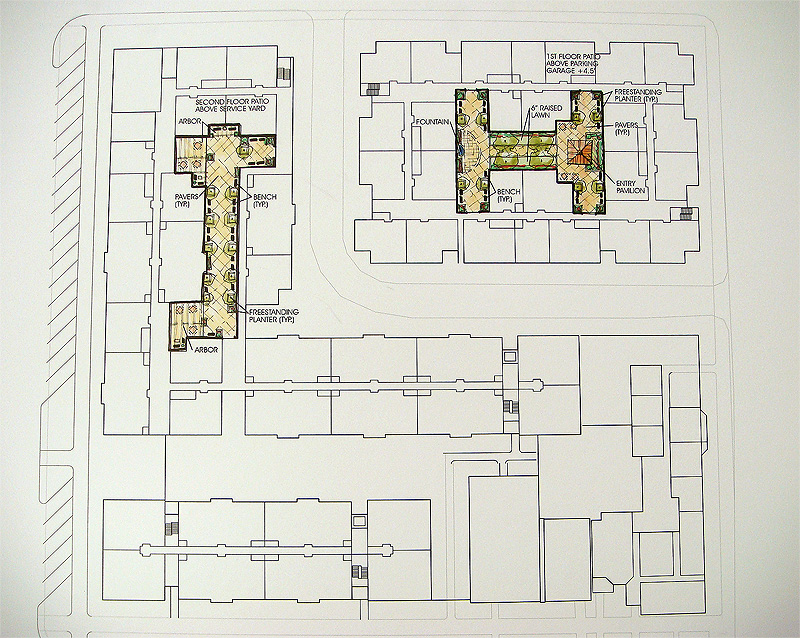

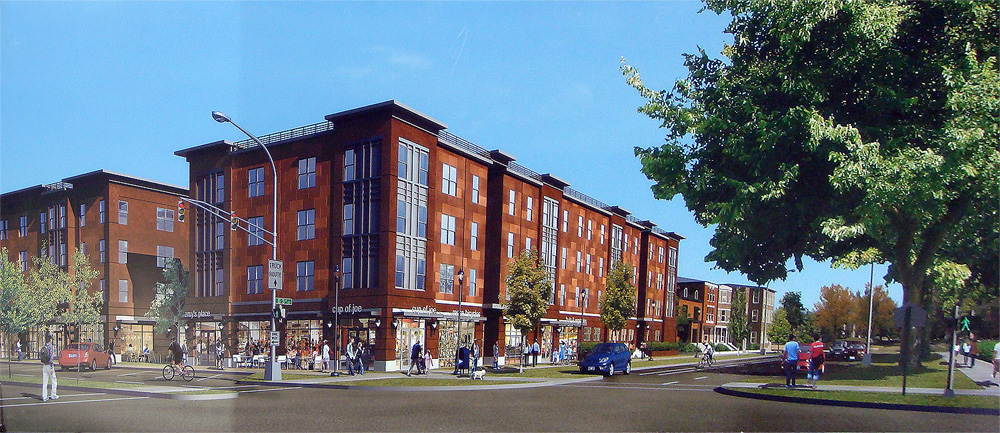

nice post – good commentary. i hope you can get it to a wide audience.
the missing piece here, though, is design. the stats can work or they can fail miserably – a lot depends on the appropriateness of the proposed design of this development. and by appropriateness i don't mean something as non-specific as 'fit', with gewgaws and historic trappings. a successful design will be composed to address local scale and complementarity of volumes and forms. and it's gotta have the right mix of commercial/residential, addressing the surrounding sidewalks and streets in a way that generates pedestrian activity and serves the neighborhood.
has anyone seen a proposal yet?
If you would like to comment on the proposal at the Masterson’s site, it would be nice if you got the facts right, got your sequence of events straight, understood the Traditional Neighborhood Zoning District (TNZD), and had even the remotest clue about the thinking of either the Old Louisville Neighborhood Council (OLNC) or the Old Louisville Chamber of Commerce (OLCC). In case you are unaware, you screwed up on every point.
Let’s start by getting the facts straight. First, the site is totally within the TNZD and is mapped Neighborhood General. This allows one and two family dwelling units, no commercial, no parking lots and says nothing about density. To build this project will require remapping of the area to a designation that will allow the development. At this time, the developers and their attorney have yet to determine what designation will work with the Old Louisville Neighborhood Plan – a little item that took more than a year of work by neighborhood representatives and members of the planning commission, and was adopted by the Board of Aldermen (pre metro). Somehow this just gets pushed aside when a proposed development doesn’t fit.
Second, at a meeting on June 4, 2008, the developer presented to various groups, including representatives of the OLNC and the OLCC, their proposal for development of the Masterson’s site. This included redevelopment of several historic buildings on the site, residential buildings with a total of 700 bedrooms in approximately 300 units, 50,000 square feet of neighborhood serving commercial space, and 350 to 400 parking spaces on site. (Pay attention to the term neighborhood serving. It is an important item.) The scale of buildings in this development ranged from 4 to 7 stories.
Third, the Old Louisville Neighborhood Plan calls for redevelopment of the northwest corner of 4th and Oak with Neighborhood Serving commercial. This is reflected in the TNZD. To support 50,000 square feet of Neighborhood Serving commercial at the Masterson’s site requires far more people than the residents of Old Louisville and the University of Louisville combined. The members of both the OLCC and the OLNC understand this, even if you don’t.
Forth, any and all comments made by members of the OLNC and OLCC were made subsequent to presentation of the first proposal and were, therefore, directed only to that development proposal, not the second proposal.
Fifth, on February 10, 2009, the developer returned with a new proposal. The number of beds has been reduced from 700 to 600, 14% (not down to 150, 78%, as you reported) with the actual number of units not yet determined. The commercial space was reduced to 28,000 square feet, 44%, and the onsite parking was reduced to approximately 140 spaces, 65%. The primary client for residential units and commercial establishments are UofL students. (Notice, no Neighborhood Serving commercial.) The scale of the buildings was reduced to 4 stories, with one building on the interior of the site at 5 stories.
Now let’s look at a couple of things you don’t seem to understand. First, what is being constructed are 600 beds of student housing (developers words). According to Larry Alsley of the University of Louisville, about 95% of all students living in student housing have a car so there will be approximately 570 cars trying to park in 140 spaces. That leaves about 430 cars to park on the street. At 22’ per parallel parking space (city standard), that is 9460 feet, 1.8 miles, required to park all those cars (not including bus stops, fire hydrants and intersections). And where is that “extensive underground parking†you talk about. According to the developer, it’s out because it is just too expensive. Uof L is planning no assistance with the parking issue. (If you want to talk seriously about Urbanization, let’s talk about students living on campus needing cars.)
Secondly, if you bothered to get your time line straight, you would know that neither the OLNC nor the OLCC has commented on the second development plan. It is being studied to understand the effects on the neighborhood, TNZD, parking and development at 4th & Oak, things you don’t seem to find important in the development of a vibrant neighborhood.
If you plan on writing a column like this, you have a lot to learn: Density is determined by dwelling units, not bedrooms. The neighborhood plan does not speak to density (dwelling units per acre) but TNZD does. I have no idea where you arrive at your numbers for allowable density on the Masterson’s property, but they have no basis in reality. In fact, the property is not properly zoned for the proposed development. (If you got your information from lojic.org, you need to know that the lojic map is incorrect. In fact, all of the Masterson’s property is in the TNZD and mapped as Neighborhood General – one and two family dwellings.) The residential size of the project was reduced by 14% and the commercial by 44%, not the 80% you claim. Your concern that the scale of the development will be two story displays a lack of understanding of TNZD and Form District requirements.
Before you accuse anyone of “proceeding with a hissy fit†you really should get your details straight and find out with whom you are dealing. While you mention Herb Fink, you totally miss the significant number of Architects, Planners, zoning officials, planning officials, and Urban Planning professors that live in and speak to the issues of Old Louisville. The OLCC objected to the 50,000 sq. ft. of Neighborhood Serving commercial in the first proposal, made no comments whatsoever about the second proposal, and yet you accuse us of stepping in to “oppose the commercial space†after the second proposal . It is obvious you have no understanding of Old Louisville (the densest neighborhood in Louisville) and make no attempt to get to the truth before throwing out erroneous, non-factual and grossly misleading statements.
And one more thing, if you don’t think I know whereof I speak on these issues, consider this; one of my degrees is in Planning; I was on the Cornerstone 2020 task force that wrote Metro’s land use plan; I was on the task force that wrote the Old Louisville Neighborhood Plan and TNZD; I am on the board of directors of the OLCC, the Neighborhood Council and the Old Louisville Development Corporation, and I attended both meetings with the developers as well as potential developers of the 4th & Oak properties.
By the way, that nonexistent rendering and site plan for the second proposal can be viewed at the Old Louisville Information Center in Central Park – Center hours are 1 to 5 Tuesday – Friday. It actually is quite good and while there are many issues to be worked out, it is a big step in the right direction. Please take a look before you write anything more.
thanks, gary. i’ll have to check out what’s proposed at the info center.
a few more people here and we’d have the start of a community discussion!
while there are possibly some mistakes in the original commentary, it was just that – commentary. having an opinion about our shared built environment does not depend on having all of the facts or we’d never do anything. whatever the neighborhood’s carefully wrought plans (and i say this having been involved in similar issues for different neighborhoods), they’ll succeed only so far as they can be flexible to accommodate development that someone wants to do. they’ll have to bend a little.
whatever the current designation of the site, if you walk around it, it’s obviously a transition zone and would fit campus or marketplace or something else possibly as well as traditional neighborhood. seems a perfect fit for the kind of mixed-use 2020 championed. and a perfect place for the height/storeys restrictions to relax a little.
u of l has made great strides in evolving from a commuter campus to a residential one. one of their huge challenges, however, is the cars. (always the cars!) if they continue to grow their residential campus community – and support it with commercial – they will need some plan for answering the car problem, whether it’s a real commitment to alternatives, construction of garages (by them or developer partners), or something else. it would be nearly impossible for this kind of growing pain to be graceful – there will be friction!
glad you’re involved in the discussions with the developers, gary. hope there is room for negotiation on both sides.
I have no idea whose numbers or facts are correct, but most of them in the post seem to come directly from the C-J story that’s linked. Some of them are even attributed to Mr. Fink. If they are incorrect, perhaps the source(s) should be consulted and/or faulted rather than Broken Sidewalk.
The Courier-Journal articles where we got the development stats were completely and utterly wrong. We've talked with both the neighborhood and the developer now and will be putting a new post online this evening setting the record straight. It turns out that this development should end up pretty nice and will have a density appropriate to Old Louisville and the growing area around U of L. We'll have much more info later today.
i find gary kleirs post very derogatory against a site that does wonders to promote urban growth in louisville. bs is not advocating haphazard, cheap development. however, the area around fourth and cardinal MUST change. all of it. the retail center with the bearnos and all of it must grow and change as well along with the mastersons surface lot and the crappy red barn and all of it. i would actually like to see a luxury apartment tower above a brick parking garage with street facing retail all around the mastersons site. 50,000 sf of retail is nothing. one upscale grocery could take up much of that. could you imagine a nice fresh market in that location or even a Whole Foods (pipe dream I know)? or do you prefer “Kroghetto” on second street Mr Kleir where you cant even get fresh produce? How about the winn dixie that has been vacant since I moved here? no retailer wants to locate around fourth and oak with all the vagrants and drug dealers loitering around there. still, id love to see retail at fourth and oak AND at the mastersons site. mr kleir, your “we are too small to support” attitude is exactly the problem with louisville.
you see dense luxury student housingaround every major urban campus besides UofL. UL is starting to get outside developers creat luxury apartment complexes that students could only find in places like St Matthews before (even if they are very unsightly and suburban looking like The Bellamy). In fact, calling UofL an urban campus is almost a misnomer because there is hardly anything you can walk to. mr kleir, I dont honestly care what the planning commisions said. the planning commissions have done a lot of good, but in my four years living here now, I can honestly say I have never seen so many antidevelopment NIMBYs as I have seen in Louisville. Would you rather have a few more cars on the street, more young professionals and students around supporting neighborhood retail and existing bars and corner groceries, or would you rather see an unsightly surface lot and a campus retail scene as dead as ANY I have seen in the country (and I have seen a lot of college campuses)?
Thanks for going after the truth. Sorry I was so harsh with my comments. Now that I know where you got the information, I know why there were so many errors.
Once the Developer had a chance to speak with neighborhood representatives and understood the area much better, they really did develop a decent concept. There are still a number of issues that need to be addressed, such as parking for nearly 430 cars, but the commercial space is reasonable and the scale and design of the buildings is consistent with the area. Perhaps now we could ask some of those who feel Old Louisville is populated by NIMBYs to find a way to park a “few more cars on the street”, 430 to be exact, (that requires about 3.5 to 4 acres or 22 city blocks) in an area where street parking is virtually non existent after 5 pm. Solve that problem without increasing the developer’s budget and you may just have a project.
In a perfect world the developer would have another acre of land and $4 million to construct a parking deck for 430 cars without raising the rent on your luxury urban apartment, Fresh Market would be beating down our doors to move into the empty store at 4th and Oak, and the Kroger ghetto market at 2nd and Breckinridge would fold up an go away. Perhaps in a slightly less than perfect world people would stop carping about the problems and try to understand why they exist so they can work towards a solution.
I am a graduate of Dupont Manual High School and have to say that allowing that much of the development’s parking issue to spill onto the streets is really not the fair way to go. The neighborhood is dealing with enough cars parked on its streets as is. I think that a good solution would be a joint effort between the developer and UofL that consisted of taking the adjacent surface lot across cardinal boulevard and building a parking garage which could connect to the housing development via a bridge over Cardinal Blvd. The existing businesses on said lot could be located at the street level of the garage. This certainly turns the development into something much larger than originally intended and would likely take longer, but the infill of these blocks is important. It’d be worth it to do things the right way. Hopefully, such a garage would be able to provide sufficient parking for the new development and the existing businesses, as well as relieve some existing street parking in the immediate area.
This project will certainly provide a vibrant area on the north side of the campus and architecturally the proposal looks quite nice. The problem is it like all other proposals for the UofL area ignore the biggest problem of the area which is parking. We all know 150 parking spaces is inadequate for the 600 beds in the complex to say nothing about helping relieve the already ridiculous parking problems in the area.
Before any more residential development (or expansion of the student body) occurs a comprehensive plan to relieve the parking problems needs to be developed jointly by UofL, the city and the surrounding neighborhoods. Without this community conflicts are going to continue and become worse.
any better information regarding who the architects are? or if there is an architect involved yet?
sabak wilson lingo are a very good civil/planning firm, but they aren’t architects…
SWL produced the site plans for the project for Investment Property Advisors. The rendering didn’t have a name on it, but it may have been SWL as well for schematic purposes. This project is still fluid, so I’m not sure if another firm has been brought on board yet.
Your revision to the original article is very well done and I thank you for addressing the issues in a manner that respects everyone involved. This is a point where we can start serious discussion.
Every project begins with a preliminary concept that is modified by real world issues such as budget, zoning and the existing built environment. This new design addresses many of the issues without sacrificing the urban environment that was envisioned. You have identified the two issues that still are problematic, TNZD (zoning) and parking. To understand the zoning issue one must know some of the history of the relationship between Old Louisville and UofL. Without getting into detail, let’s just say that UofL was pushing north and the historic neighborhood was resisting. Eventually Cardinal Blvd evolved as the dividing line with an unwritten agreement that UofL would not cross that line. That line was further reinforced by the introduction of the TNZD. UofL does not really want to be in the dormitory business, so they are happy to partner with developers to create the living units their students need. While the Masterson’s development, on the north side of Cardinal Blvd, is not a UofL project, the neighborhood seems to view it as a backhanded way for UofL to renege on their agreement. If it looks like a duck…………
The issue of parking is a lot more difficult and I believe that Mark’s comments from Feb. 25 raise a serious issue, but not just one for the university to address. The real problem for everyone involved is a failure to act responsibly. Old Louisville should be working with the university for the development of a vibrant urban campus to their south – its a good and beneficial thing. UofL should respect the Historic District to their north and work for its redevelopment – pushing their parking and development problems onto the neighborhood is irresponsible. Developers should provide projects that enhance the neighborhood in which they exist – and that means addressing issues of scale and parking. Students should realize that by choosing to attend this university or live in an urban housing development, they must accept those things that come with it – paying for a parking space or using mass transit may just be one of those things.
Living in a Vibrant Urban Environment is not free. It comes with expenses and responsibilities. Unfortunately our current cultural environment seems to be one in which too many of us, including neighborhoods, universities and individuals, think those expenses and responsibilities belong to someone other than ourselves.
What UofL and TARC should really strive for is a program similar to one created by the University of Pittsburgh and Pittsburgh’s Port Authority. Included in tuition is the price of a bus pass. The students then need only scan their student IDs when boarding. Bus transit in Pittsburgh is the foremost mode of transportation for students. I am currently attending Point Park University in downtown Pitt and, here, bringing a car is truely more of a burden than it is a benefit. Now certainly the urban make-up makes it more of a possibility for this sort of lifestyle to take root, but if in the next decade UofL can continue to expand its housing, retail, and dining options, it can slowly move toward a type of campus in which a majority of students will find that they don’t need a car for their first few years at UofL. Unfortunately, such an idea will be hard to pitch to local and in-state students who have grown up knowing only their car and the “freedom” it provides, but as UofL’s out-of-state enrollment continues to grow, it is an idea that may begin to seem less and less alien to the school.
^^^ Um UofL students (and anyone with a UofL ID) DO ride TARC for FREE and have for as long as I have been in the city! also, plenty of students use tarc.
To Mr Kleir, you are NOT in a small town! You are in the most urban neighborhood in a metro area of 1.3 million. If you want to live in a historic small town, I hear Bardstown is nice!
I have never seen a great urban neighborhood where parking isn’t an issue. In fact, the worse the parking, usually the better the urban neighborhood. Take the Highlands. or Mt Admas in Cincy or Short north in columbus or the west end of nashville or lincoln park in chicago. urban neighborhoods have parking problems, and that is part of (dare I say it) living in a midsized of “big” city. Insetad of impeding the gentrification and increasing the density of old Louisville, Mr kleir, you should bend over backwards to help any out of town developer risking their money in a city that often has such a small town mindset! This proposal is beautiful and is what Old Louisville needs more of if it is not to be viewed as the “ghetto” by everyone in east Louisville.
In response to Michael Bolen,
You state that any vibrant urban area has a parking problem, which is true in many cases. But having a parking problem doesn’t necessarily make an area a vibrant urban area. Many factors come into play, and bad parking conditions is just a byproduct of the other factors. Rather than accept parking problems in urban areas progress in cities should tackle the problem up front and provide resolutions to the problem instead of accepting it. Louisville has buried its head in the sand for too long on the parking problems in the Highlands and Old Louisville, they need to redesign future projects that will make the problem worse and require them to help resolve the problem. If this isn’t done Old Louisville will not be viewed as a ghetto but rather as a urban parking lot.
It’s great when developers want to build in Old Louisville, the Highlands or anyplace else but everyone needs to ensure that these developments are in the best interest of everyone involved not just a few special interests.
PS: just in case you’re wondering I don’t live and Old Louisville, I just love the area and only want positive development to occur there or anywhere else for that matter.
I had no idea UofL students rode for free! Well unfortunately, the vast majority of students I am friends with do not ride TARC and all have their cars on campus. I really don’t personally know anyone at UofL who hasn’t taken their car to school. Which is a little sad. But I’m really glad to hear that the system is already in place.
Interesting, Mr Bolan. Obviously I touched a nerve. Could it be that I asked people to act responsibly and that offended you?
Great discussions.
As a side note, I beleive someone mentioned keeping the tudor style structure at the corner. The tudor style structure at the corner of Third and Cardinal has only had that design since about 1972.
I wouldn’t really call it historic. The site has held a trolley barn, a hotel, and then Masterson’s took some of the site over in 1938 and it was just a drive in hamburger joint. Major additions were done in 1962, 1972, and 1976. Given the prior uses the property was inapropriately zoned in the 1st place. It has never been low density residential. Unfortunately at the time of the TNZD rezoning we were to young and dumb to get involved in the process otherwise I suspect the property would have never been included in the TNZD.